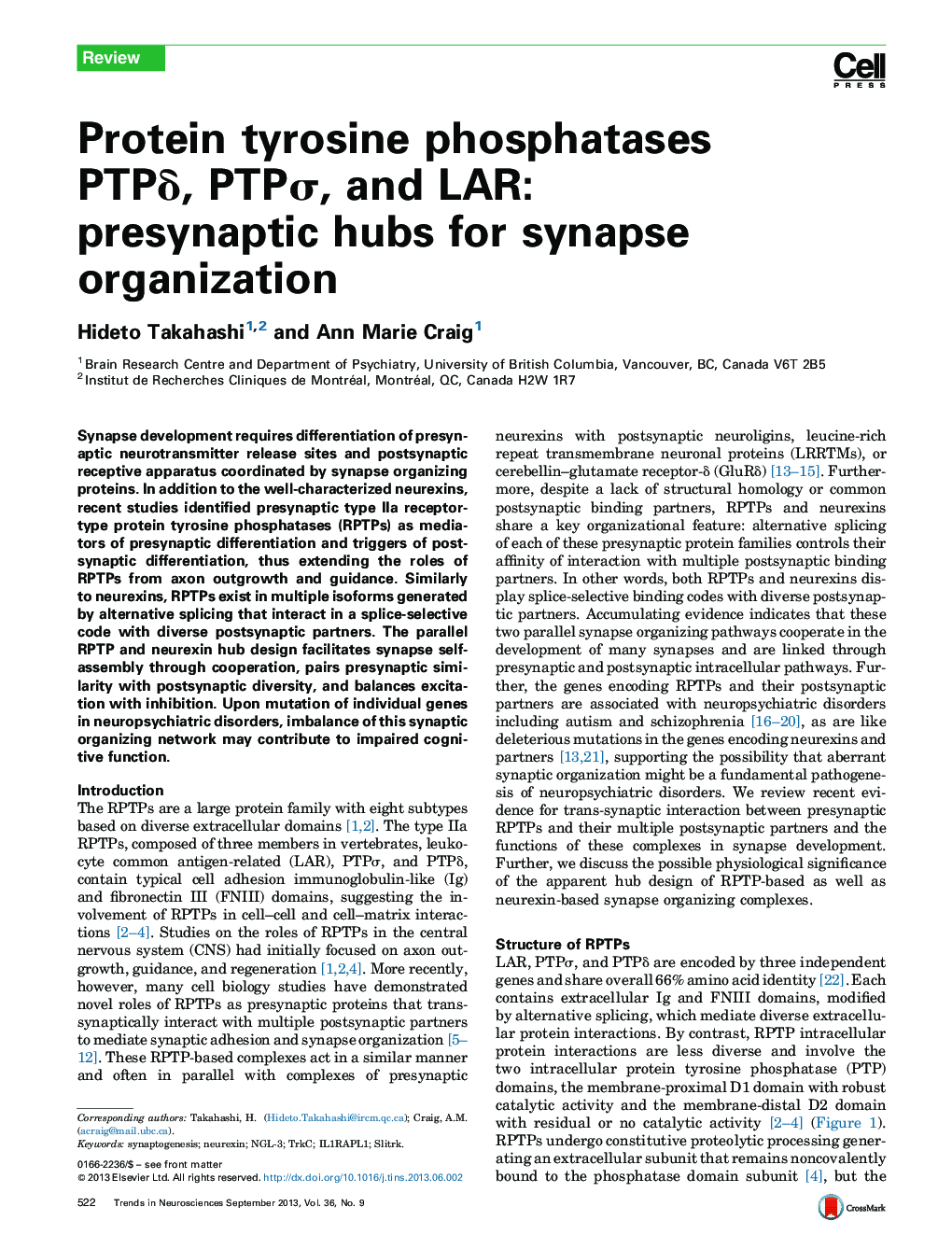| Article ID | Journal | Published Year | Pages | File Type |
|---|---|---|---|---|
| 4354391 | Trends in Neurosciences | 2013 | 13 Pages |
•Protein tyrosine phosphatases (RPTPs) and neurexins form parallel presynaptic hubs.•RPTPs bind multiple postsynaptic partners in an isoform- and splice-selective code.•RPTPs and partners bidirectionally signal pre- and post-synaptic differentiation.•Like neurexins, mutations in RPTPs and partners link to neuropsychiatric disorders.
Synapse development requires differentiation of presynaptic neurotransmitter release sites and postsynaptic receptive apparatus coordinated by synapse organizing proteins. In addition to the well-characterized neurexins, recent studies identified presynaptic type IIa receptor-type protein tyrosine phosphatases (RPTPs) as mediators of presynaptic differentiation and triggers of postsynaptic differentiation, thus extending the roles of RPTPs from axon outgrowth and guidance. Similarly to neurexins, RPTPs exist in multiple isoforms generated by alternative splicing that interact in a splice-selective code with diverse postsynaptic partners. The parallel RPTP and neurexin hub design facilitates synapse self-assembly through cooperation, pairs presynaptic similarity with postsynaptic diversity, and balances excitation with inhibition. Upon mutation of individual genes in neuropsychiatric disorders, imbalance of this synaptic organizing network may contribute to impaired cognitive function.
